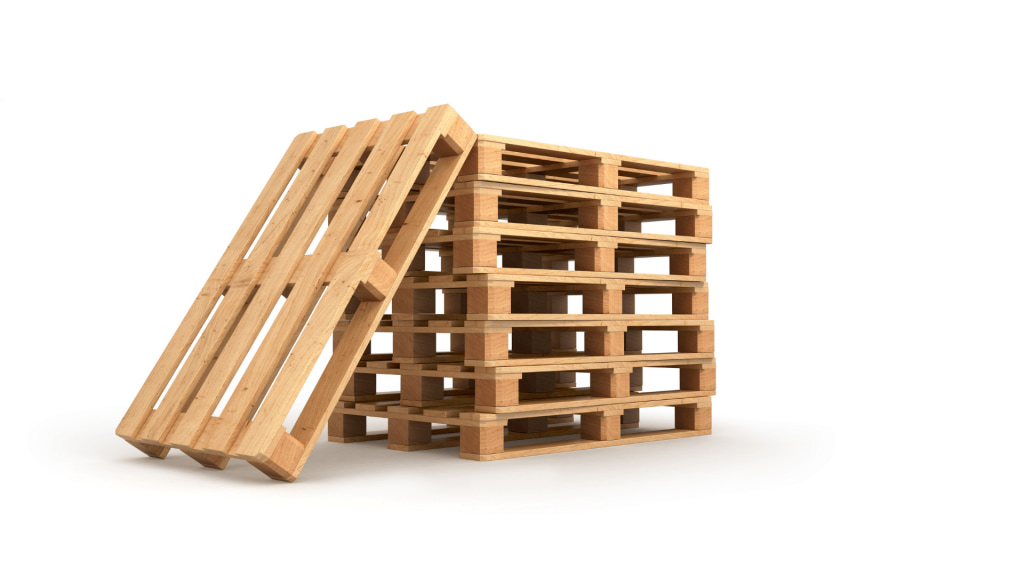Reliable package fixation is crucial for adequate loading and is frequently requested by shippers. Palletizing can help reduce overall shipping costs since a pallet is considered a single piece, regardless of the number of packages. Some freight carriers require mandatory palletizing, so knowing the basics of palletized freight shipping will help avoid confusion when shipping pallets by LTL freight.
What is palletized LTL freight and palletized boxes?
Providing safe and secure packaging is essential for smooth freight transportation. When shipping with less-than-truckload, packing is even more critical because the carrier combines multiple shipments in a trailer. Preparation simplifies handling, loading, and unloading and prevents cargo damage. The most common way of packing LTL freight is palletizing.
Palletizing LTL freight is locating packaged boxes on wooden or plastic freight pallet constructions. Shippers use palletizing to additionally secure cargo inside the truck and prevent it from unwanted movement. Every time you move multiple packages through LTL shipping services, pallets will make handling more accessible and faster and mitigate your worry about your shipment’s safety.

How to choose suitable pallets?
Standard pallets are wooden or plastic, are 48 x 40 inches in size, and can typically fit around 4,700 lbs. Choosing the right pallet plays a large part in the packing process. Here are some important rules to keep in mind while picking pallets for your freight:
- Boxes shouldn’t hang off the pallet edge. Otherwise, it can suffer severe damage. Make sure the cargo size does not exceed the pallet size.
- Freight shouldn’t take less than 65-70% of pallet space. If your cargo is not wide enough, try another pallet size or locate your boxes differently.
- Don’t use too old pallets, as they can easily crack and cause freight damage. However, you can use shipping pallets repeatedly as they typically save their shape and properties during transportation.
- When you ship a pallet, be sure to follow weight recommendations for the pallet and do not exceed the stated limit.
How to palletize your freight?
When palletizing LTL freight, following a particular sequence of physical operations is vital. It will allow you to secure the items appropriately and stay confident about your cargo safety throughout the shipment. With these measures, you will not only be sure your palletized load is safe but also simplify transporting and handling for carriers, which can eliminate your shipping spending.
Proper placement and pressure distributing
With a palletized load, it’s better to put the heaviest items on the bottom and the lightest ones on the top. It will distribute the total weight evenly on a pallet, which helps reduce the risk of freight damage or breaking the pallet itself. If you’re shipping fragile objects or oddly shaped items, locate them on the cargo top to avoid destructive pressure.
Put layers of cardboard or thick paper between every second or third pack of your palletized shipment. It will help reduce pressure on the bottom package and help ensure your palletized load’s safety.
Sealing
If you use boxes, cartons, or bags, ensure you have appropriately sealed them. Protect the corners and stack the boxes properly. Don’t leave space between the cartons to avoid shifts on a pallet. Sealing primarily prevents separate cargo pieces from falling out of your palletized load and ensures freight integrity during delivery.
Padding
Padding the packages in your palletized shipment is a must for secure transportation. Some carriers wouldn’t take loose boxes with no internal protection, so make sure to stuff cartons with soft material, especially when items are fragile. It will make your packages denser and less prone to transportation damage. You can also consider void fillers that shippers usually put inside the crates, thus creating additional volume.
Labeling
Label each pack with instructions for handling, like “fragile,” “do not turn upside down,” etc. It will help carriers to serve your freight carefully. Aside from labeling every package, consider putting a tag on your palletized shipment.
It especially applies to those cases when you’ve filled the pallet with your boxes only. A labeled pallet with a short list of shipped items can streamline the freight checkups and prevent frequent reopening of the crates.
Wrapping
Use strapping or metal taping to make packages hold together. Wrapping the boxes while capturing the pallet planks would be a good move to strengthen the protection. It will make the whole cargo construction more stable and reduce transit oscillation.
Automated equipment
Finally, consider using automated palletizers that simplify packing your palletized freight for shipping. Palletizing equipment places the boxes on a pallet according to your configurations: pallet size, cargo volume, additional fixation, etc. Automated palletizers align packages with the pallet square so that the shipment’s weight doesn’t create uneven pressure on particular areas. Besides, programmed palletizers can generate shipping labels and warn you about possible damage threats through notifications.
At GoShip, we aim to ship your products safely and affordably. On our website, you can connect to many experienced carriers who share your shipping safety concerns and are ready to palletize for LTL shipping. Compare carrier rates, get a free online LTL quote or FTL quote, and start your fast and safe shipping today!